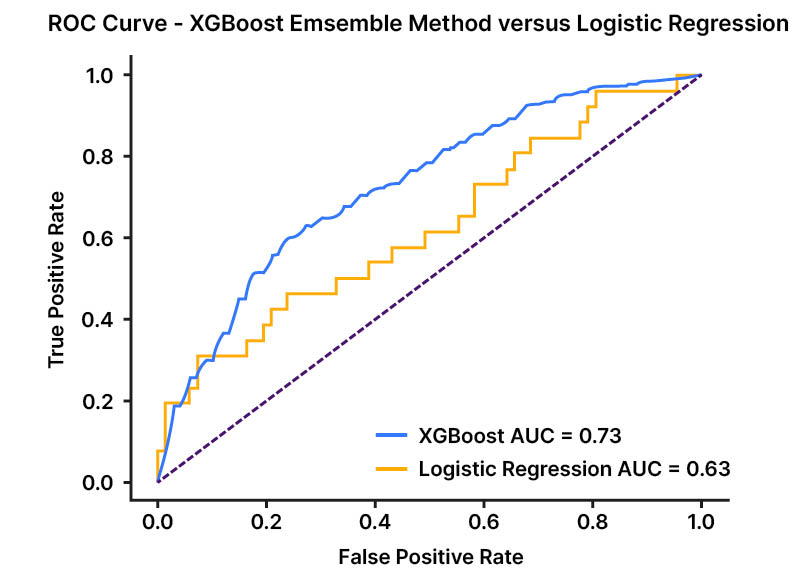BACKGROUND AND AIM
Transcatheter aortic valve implantation (TAVI) has increased in the latest years.1 Post-TAVI conduction disturbances remain frequent and variable among sites, despite continuous improvement in technology and procedural techniques, that often require pacemaker implantation (PMI).2 AI- and machine learning (ML)-based technologies may contribute to developing better prediction models in this clinical context.3-5
The authors’ aim was to develop a ML-based binary classification model for predicting PMI after TAVR, compare it with a regression-based model, and validate it in a prospective cohort.6
METHODS
This was a single-centre retrospective study on patients that underwent TAVI between 2018 and 2024. A comprehensive review of demographic, clinical, ECG, echocardiographic, cardiac CT scan, and intra-procedural data was performed. Both pre- and intra-procedural variables were included in the dataset to train the model.
A Python (Python Software Foundation, Wilmington, Delaware, USA) script was developed to build a binary classification model. Due to the dataset imbalance, a Synthetic Minority Oversampling TEchnique (SMOTE)-based upsampling technique was performed on the minority class. The eXtreme gradient boosting (XGBoost) open-source software library and algorithm was used to train the ML-based prediction model. To achieve better performance, the authors implemented an ensemble model approach consisting of 21 binary classifiers. For each patient, the final prediction was determined by aggregating the predictions from all classifiers and selecting the most frequently predicted value.
Both testing and validation model performance metrics were computed using the confusion matrix of predictions and include weighted precision (WP), weighted recall (WR), and weighted F1-score (WF1). In addition, logistic regression was executed for performance comparison between models. Receiver operating characteristic curves area under the curve (AUC) values were developed for both models.
RESULTS
From a total of 672 TAVI procedures during the study period, 611 patients entered the analysis. The mean age was 82 years and 44% were male. PMI occurred in 170 (27.8%) patients and the median time until implantation was 3 days.
Using the XGBoost ensemble ML algorithm, a scoring model was generated. Among the 21 variables, the highest weighted variables were the presence of right bundle branch block, QRS duration, peripheral artery disease, male gender, and left bundle branch block.
The ML-based model performance metrics were as follows: WP of 58.47%, WR of 59.07% and WF1 of 58.69%. The logistic regression model had the following metrics: WP of 48.45%, WR of 54.80% and WF1 of 51.43%. The AUC for XGBoost was 0.73, compared to 0.63 for the logistic regression (Figure 1).

Figure 1: Receiver operating characteristic curve comparing the eXtreme gradient boosting ensemble machine learning algorithm with logistic regression.
AUC: area under the curve; ML: machine learning; ROC: receiver operating characteristic; XGBoost: eXtreme gradient boosting.
Seventy-eight patients entered the prospective validation cohort. PMI occurred in 23 (32%) patients. The metrics from the authors’ ML-based model in the validation cohort were as follows: WP of 66.17%, WR of 64.48%, and WF1 of 65.42%. The metrics from logistic regression-based model were: WP of 58.22%, WR of 52.28%, and WF1 of 55.09%.
CONCLUSION
The authors created and validated a ML-based prediction model for PMI after TAVI. This model outperformed the traditional used regression-based model. This underscores the move towards a more personalised medicine, where AI and ML-based models may enhance clinical decision-making for better patient outcomes.







